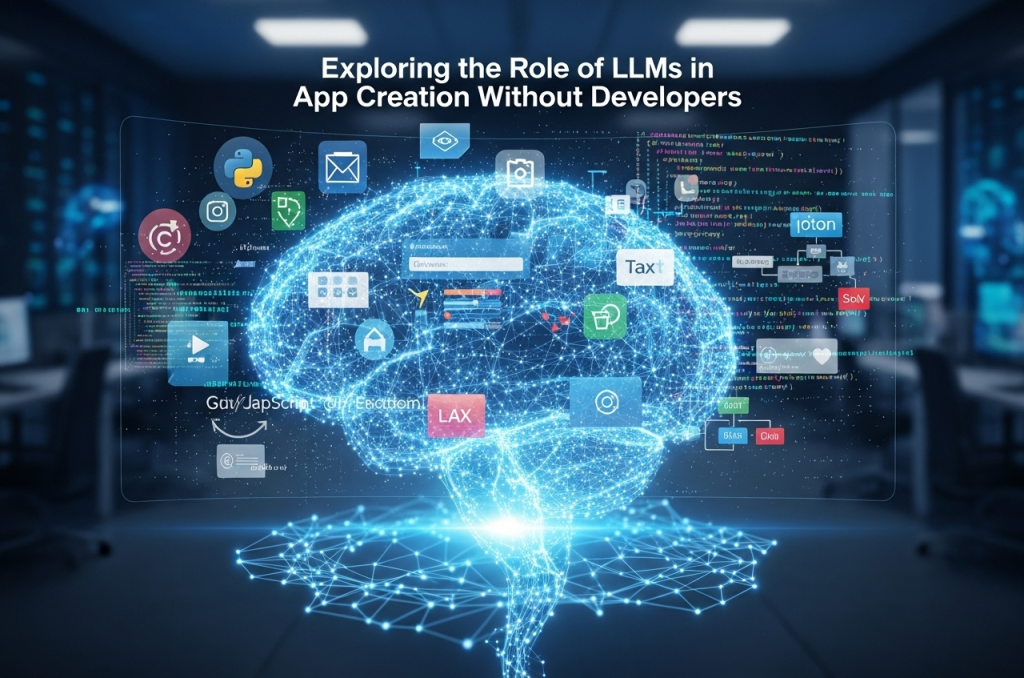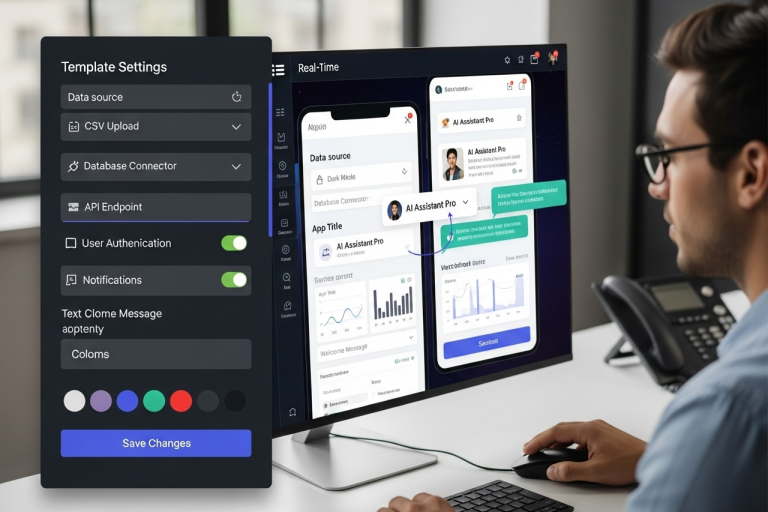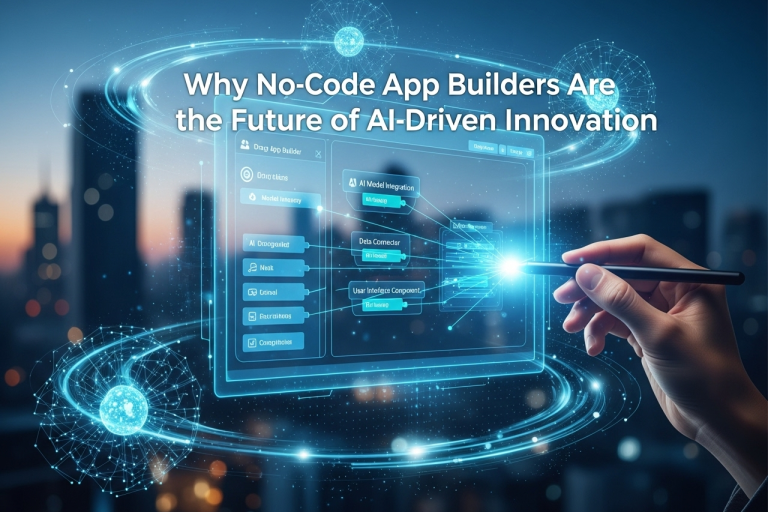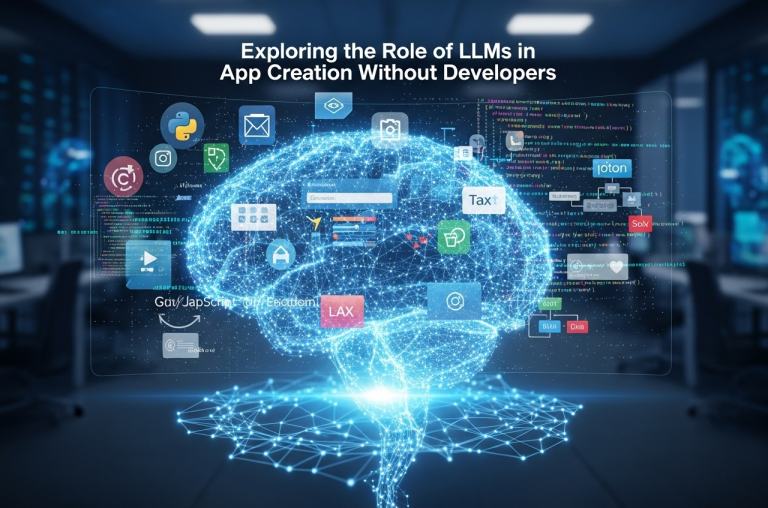Creating a mobile or web app has long meant hiring developers. You need people who know programming languages, frameworks, setting up servers, building user interfaces, testing, maintaining, integrating with payments or other services. That takes time, cost, coordination. For small businesses or individuals, that barrier often meant ideas never become apps.
In recent years, tools called no-code or low-code platforms have emerged. They let non-programmers build apps via visual No code AI app builder, templates, drag-and-drop design. But still many such platforms require technical thinking: knowing how workflows should run, designing data models, handling edge cases. And many are limited in flexibility.
Large Language Models (LLMs) are changing part of that. Models like GPT-4, Claude, etc., understand natural language, can generate text, logic, sometimes even code. If you can tell a system “I want an app that does X, Y, Z,” LLMs help generate components. That could reduce or remove the need for developers.
What LLMs Bring to App Creation Without Developers
Here are what LLMs offer to enable app building without coding experts, and where they still need help. They simplify the process of translating human ideas into functional logic, bridging the gap between non-technical creativity and technical execution. By reducing repetitive coding tasks, LLMs make app development faster, cheaper, and more accessible to a wider audience.
However, they are not a complete replacement for human expertise yet, complex applications, industry-specific compliance, and nuanced workflows often still require oversight. In many cases, LLMs act best as collaborative partners, handling the heavy lifting while humans provide direction, review, and refinement.
Natural Language to Logic and Code
LLMs can take plain English descriptions and convert them into code snippets, workflows, UI layouts. For example, in research called LLM4FaaS, non-technical users described what they wanted; LLMs generated function code and deployed it via Function-as-a-Service (FaaS). That system succeeded in 71.47% of real-user prompts. Without FaaS support, success was about 43.48%.
Automating Routine Workflows and Integrations
LLMs can help reduce manual steps: e.g. setting up integrations (APIs), automating triggers, handling form logic, automation flows. Because they can process large amounts of text and data, they can suggest structures, pick templates, or even define data models based on user description.
Enabling No-Code Platforms to Understand Users Better
No-code platforms historically depended on visual tools. LLMs allow user input by speech or text. Say “I need a CRM for real-estate leads, send alerts, integrate with Google Sheets.” An LLM can interpret that and map it to UI + backend + notifications. This gives more flexibility. Research shows that variation in prompt language and model choice affects how accurate generated workflows are.
Reduction of Technical Overhead (Deployment, Hosting, Scaling)
Even if code is generated, deploying, maintaining, securing apps often needs technical support. Systems combining LLMs with FaaS (serverless functions) take away much of that. The FaaS model handles infrastructure, scaling, uptime. In LLM4FaaS, combining LLM with FaaS improved the success of working, deployable apps.
Future of LLM-Powered App Development
The next phase of LLM-powered app development is set to move beyond simple automation toward more intelligent, context-aware systems. Current models already generate functional workflows and code, but ongoing research shows that accuracy, adaptability, and domain-specific reasoning are steadily improving. For example, studies in 2025 on LLM4FaaS demonstrated how combining large models with serverless infrastructure increased successful deployment rates from 43.48% to over 71%. Future iterations of such integrations are expected to push success rates higher by embedding stronger validation layers and real-time debugging support.
A major advancement will be the use of multi-modal LLMs, which process not just text but also images, audio, and structured data. This will allow users to design apps with voice commands, sketches, or even uploaded datasets. Another trend is edge and multi-cloud deployment, where apps generated by LLMs can scale automatically across distributed infrastructure, reducing latency and improving reliability for enterprise workloads.
Security and compliance will also evolve. LLM platforms are beginning to integrate automated policy enforcement, ensuring that generated apps adhere to GDPR, HIPAA, or PCI DSS without requiring developers to manually configure compliance rules. At the same time, enhanced AI-driven monitoring will provide predictive analytics, helping businesses optimize performance and prevent downtime.
Ultimately, the future of LLM-powered app development lies in greater autonomy without losing human oversight. As models become smarter and platforms integrate enterprise-grade safeguards, non-technical creators will be able to launch production-ready applications faster, safer, and at a scale once only achievable by professional development teams.
What Limits Remain for LLM-Based App Builders Without Developers
LLMs are powerful, but they are not perfect. These are weak spots that still need attention.
- Accuracy & correctness. Generated code or workflows may have bugs, security issues, or not exactly match edge cases.
- Context & domain knowledge. Some tasks require domain-specific logic (e.g. health, finance, legal) where mistakes have high cost. LLMs may need extra data, constraints, or oversight.
- Prompt quality matters. How you phrase your request influences output strongly. Poor prompts lead to missing features or incorrect assumptions.
- Maintaining & evolving apps. Once the app is live, needs updates, bug fixes, scaling, optimizations. Non-technical users may struggle unless platform handles it.
- Regulation, data privacy, security. Apps often need to comply with laws (like data protection, encryption, authentication). Generated parts must adhere to those.
Evidence from Recent Studies
- The LLM4FaaS study (2025) showed that non-technical users could use natural language descriptions to build and deploy apps via LLM + FaaS. Success jumped from 43.48% (baseline without FaaS) to 71.47% with FaaS.
- In a study of LLMs applied to no-code IoT app development, researchers found that prompt language, model size, and training data had strong effects on how well generated apps worked. They considered tasks like automation in smart home, rules, triggers.
- In “How No code AI app builder Use LLM Technology” (2025), it is observed that platforms using LLMs allow users to describe app features in plain language, and then generate code or logic, UI layouts, integrations etc.
Use Cases & Ideas Where LLM-Based App Creation Shines
These are cases where building via LLMs without developers works well.
- Internal tools for small business: inventory tracker, lead manager, feedback form, appointment booking.
- IoT / automation apps: smart home rules, device triggers, alerts, monitoring.
- Simple data-based dashboards: collecting input (forms), showing charts, exporting reports.
- Prototyping: try ideas fast. Get basic UI, workflows to test with users.
- Non-profits or small teams with limited budgets: to get an app without hiring expensive developers.
How Platforms Use These Capabilities: Common Patterns
Here are patterns that platforms use to make LLM-based app creation reliable.
- Template + customization: Users pick a starting template, then modify via natural language or visual builder.
- Natural language dialog / wizard: Platform asks questions (“What should users be able to do?”, “What kind of data?”, etc.) to shape requirements.
- Pre-built widgets and integrations: Forms, charts, payment gateways, etc., so LLMs generate code that plugs into existing components, reducing chance of errors.
- Automations & workflows: Trigger-action logic, scheduled tasks, alerts, etc.
- Security & compliance baked in: Authentication, role-based access, encryption, etc., are pre-handled by the platform so user doesn’t have to build them.
- Monitoring, analytics, backups: To maintain apps, catch issues, allow iteration.
How to Choose the Best Platform
Selecting the right AI no code app builder requires more than checking templates. You should evaluate technical depth and long-term reliability. Consider the following points:
- Scalability and Architecture: Check if the platform supports elastic scaling, serverless deployment, and high-availability clusters to handle growth without downtime.
- Data Management: Look for structured data modeling, schema flexibility, API connectors, and database integration (SQL/NoSQL). Ensure import/export pipelines are supported.
- Integration Capabilities: Verify support for REST APIs, Webhooks, GraphQL, and third-party service connectors like CRMs, ERPs, and payment gateways.
- Security and Compliance: Confirm encryption protocols (AES-256, TLS 1.3), role-based access control, multi-factor authentication, GDPR/HIPAA compliance, and DDoS protection.
- Customization: Evaluate widget libraries, SDK support, and extensibility for custom scripts or plug-ins when built-in tools are insufficient.
- Workflow Automation: The platform should allow trigger-based automation, event-driven architecture, and scheduled jobs for repetitive tasks.
- Monitoring and Analytics: Demand built-in dashboards, log retention, performance metrics, and error tracking. Look for AI-driven insights for optimization.
- Backup and Version Control: Ensure snapshot backups, rollback features, and version branching for safe experimentation.
- Support and Upgrades: Prioritize platforms offering SLA-backed support, timely security patches, and continuous feature updates.
Work Master: Simplifying App Creation Without Developers
Here at Work Master, we bring together what recent research shows works well. We offer an AI app builder without coding, built for people who want their ideas to become apps, fast, and correctly.
What Work Master Offers
- Three steps to create apps. Pick a template, adjust branding & features, get your app URL & QR code immediately.
- No technical skills needed. You don’t need to know HTML, programming, servers. It works as one of the best no code app builder in USA style platforms: clean, reliable, high quality.
- Full customization and flexibility. As your business grows, you can adjust workflows, layouts, integrations.
- Integration with third-party tools: APIs, payment gateways, CRMs etc.
- Automation tools so you reduce manual tasks. For example workflows triggered automatically.
- Widgets marketplace: you get forms, calendars, charts etc. prebuilt.
- Cross-platform publishing: your app works on iOS and Android without separate coding.
- Strong data and security features: encryption, role-based access control, secure login, GDPR compliance, DDOS protection.
- Analytics and monitoring to track performance and usage.
- Data import/export and connectors to external services.
How We Align With LLM-Powered No-Code Research
Studies like LLM4FaaS show that combining LLMs with infrastructure that handles deployment (like our platform) boosts usable outputs. We address prompt quality by offering templates, guided builders. We simplify integrations and automations. We manage security and compliance for you.
Our platform gives users a free plan to start. Paid plans go up to a premium Enterprise-level. Plans have storage up to 2TB; usage, backups, version control; and collaboration tools.
We ensure government privacy law compliance (for example, GDPR in relevant markets). Our security includes encryption at rest and in transit, authentication layers, role-based access. High volume usage is safe.
Why Work Master Stands Out
Because we aim to be the real best no code app builder in USA style offerings, but available globally. We combine AI-aided workflows, ease of use, and enterprise security. We let you build web or mobile apps quickly, without hiring developers.
LLMs are shifting app creation. They allow natural language input, automatic code/workflow generation, integrations, and automation. Combined with platforms that cover deployment, security, UI, monitoring, non-technical users can build real apps. Research shows adding infrastructure like FaaS boosts success. But limits remain: accuracy, domain specificity, prompt clarity.
At Work Master we have built a platform that addresses these limits. We provide AI app builder without coding, strong security, integrations, and enterprise grade features so that you can go from idea to usable app without needing a developer.
Get Started
Turn your idea into an app today with Work Master. Sign up for free, explore templates, build your first app in minutes with AI no code app builder. Whether you’re a small business owner, a startup founder, or simply someone with a great idea, our platform is designed to take you from concept to launch faster than ever. You don’t need a technical team or weeks of planning, just describe what you want, customize it, and publish instantly. Start small, test your ideas, and scale as you grow. The future of app creation is here, and it starts with your first click.







